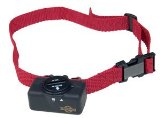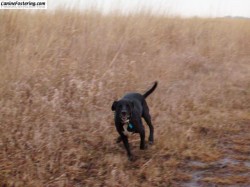Archive for the ‘dog ownership’ Category
Old age is catching up with Brandy
We are currently living with an elderly dog in our home. My husband Mike’s dog, Brandy, turned 15 last August 4th. She has always defied age, seeming to be many years younger than she really was. But lately it seems, time has caught up with her. For a while now she has seemed to be much weaker in her legs, especially her back legs. She didn’t run as fast or as far and sometimes struggled getting up the stairs in our house. But she still walked with me every day – 2-3 miles, and spent many hours outside. But slowly things have been changing. After talking at length, Mike and I agreed (and the vet confirmed) that she seemed to be suffering from pain due to arthritis. So we put her on Rimadyl – first a half a pill a day, then we bumped it up to a full pill (half 2x per day) to manage her arthritis. It seemed to do the trick and we had our old lively senior back again…for a while.
Then the accidents in the house became more frequent and she began needing to potty in the middle of the night – sometimes multiple times. And she seemed to be struggling at times to stand up from a lying position and conversely, she often seemed to “collapse” in half from a standing position (her back legs would just fold at the hips and down she’d go, legs sticking straight out in from of her.) We decided to limit her walks. She seemed better for awhile but then she seemed to have even more trouble navigating the stairs, and often she’d simply slide down them after making it half way up. Mike started carrying her downstairs at night to potty. I do sometimes during the day too. We think maybe the walks, even though they were long, were actually helping with the arthritis so I’ve begun walking her again, but just a half mile a day. We will see how it goes.
Recently I saw her struggling to poop, the position she was in was difficult for her to maintain so she began to teeter, then she fell, sprawled in the snow. She struggled to get up and fell again, face first. She struggled again and you could see that her legs seemed to be locked in the wrong position, front legs pointing nearly to the sides. I had tears in my eyes as I watched…it happened fast and just as I was heading to the door to help her she miraculously regained her balance and somehow made it up the stairs. At the top she snorted and shook herself (it appeared to me that she was gathering up her dignity) and gingerly walked inside.
I have had a difficult time with Brandy for the entire time I’ve known her. She has been frustratingly defiant, difficult to train, and aloof. But seeing her move through her old age with such grace and acceptance has made me respect her much more. I feel for her so. And so now, we wonder, how long will she be with us? And, do we decide when it is her “time” to go? Or do we let “nature” take its course? There are no easy answers here.
10 Party Tips for Dog Owners
With the holiday season upon us, I’ve had many questions about what to do with “rowdy” dogs during a party. Here are my top ten pieces of advice:
1. Feed the dog prior to the party starting and then make sure you take them out to potty after about 15 minutes. If they don’t produce for you, then make sure you make a note for yourself to try again in another 5 minutes. Nothing worse than a potty accident right at the start of the party.
2. WALK them as long as you can as close to the start of the party as possible. Make this a controlled walk, dog at your side, you determine the pace and the direction. Try for a 45 minute walk but no less than 30 minutes. More is better.
3. Advise guests to completely ignore the dog when they arrive and not to pet, look at or talk to the dog until you give the go ahead. Prepare for this to be the hardest thing to accomplish! Only let guests say hello to the dog once the dog is settled nicely. Expect this to take awhile – likely a good 45 minutes into the party.
4. Keep the dog on leash during the party. There is no reason to let a young or out of control dog have free reign of the house during the party. Keeping them on leash and nearby is far better than isolating them to their crate or a back room. This will only cause barking or possible distructive behavior. Dogs are social like us, they deserve to be wtih the group.
5. Work the obedience skills – especially down/stay. Have treats ready and practice these two commands while you take a break and sit down. If you can’t take a break from the action then …
Dealing with dog dominance issues
The Problem
Hi Kristin,
As always, I think of you when I have a dog behavior question. I really value your advice.
As a reminder, I have S- (almost 3 years old), Th- (1.5 years +) and B- (1 + years). All male dogs and they have been neutered.
When I place an object of decent size (like a garbage bag not a gardening shovel) in the backyard, inevitably B- and S- will urinate on it. Usually within minutes of it’s arrival. Th- doesn’t usually partake in this activity. In the last two days, I have found urine in the house. On the sides of furniture, on an exercise ball (this was new to the room) and on a new piece of exercise equipment. Because it’s not puddles on the floor (it’s more like sprays on the sides of furniture and a few carpet accidents….I don’t think it is a dog with a urinary tract infection…..I could be wrong. When they have had accidents in the past they are always in the same exact place…not where I found them in the past two days. Now, I haven’t caught any of the dogs in the act. However, when this happened yesterday Th- wasn’t in the room so I know yesterday it wasn’t him. I can’t think of anything that has changed.
Any ideas????
-L
My Response
(more…)
Aggressive behavior issue
The Problem:
Kristin –
We’ve been working on the exercises from class but have discovered an off-leash problem. Two days ago A- took our dog to the dog park for the first time. It was empty and he was enjoying the freedom to run since our yard is not fenced in. However when A- tossed him a tennis ball he brought it back and dropped it and lunged at her. He kept grabbing at her arm and gnawing it. She struggled for several minutes to get him off, but he kept lunging for the arm. She ended up with several bad bruises and a few scrapes. Our dog went back later that night and only had issues when a toy was removed form his mouth and he wanted it back.
The next day E- took him to the park to see if this behavior was the same. This time there were other dogs and people. He was doing fine for 20 minutes, but then he ran back to a girl who had previously pet him and proceeded to lunge at her arms.
This behavior is frightening to us as we have lots of little kids in our family and this lunging/biting/gnawing is unacceptable. He is fine on the leash, though on occasion he has turned around and jumped on E- a few times. He is mouthy at home, but we have been discouraging that with “Leave it” or removing ourselves from the situation. When he lays on his back and we pet him he likes pawing at the air and trying to nip our hands.
We’re not sure if his behavior is real aggression or just exuberance. But we would like to know how we can diagnose the problem and if it is something we can work on.
-A- & E-
My Reply:
A- and E-,
You are correct in being alarmed…any “exuberance” should not cause harm to a human or their clothing. But it is unclear if it is “aggression”. This is difficult to diagnose over email and having only met you and your dog in a large class. But I would be happy to do a more thorough evaluation for you if you’d like. I do in home work through the Water Bowl (formerly the GenevaRuffners). There is a list of training I offer through there.
Barking while Crated
Here’s a note from A. & E.:
We were wondering if you had any advice in regards to barking in the crate. Scooby sleeps in his crate at night and the first 3 weeks he made it thru the night without barking. But recently he has started waking up between 2-5 AM barking. Because we live in a townhome this cannot be something that the neighbors enjoy.
Do we ignore him and hope he stops when we ignore it? Or should we be doing something else?
Barking is one of those things that can be reinforced inadvertently… you don’t think you’re reinforcing it but you are. Any attention to a bark will reinforce it – telling the dog to quiet, trying to soothe the dog and letting it out to see if it has to potty are all ways we can reinforce a dog’s barking. There are things you can do to stop the behavior – first of all make sure the dog is sufficiently exercised prior to crating – imagine how terrible it is for a dog to be confined in a space only large enough to sleep in when they are coming out of their skin with energy. And don’t assume that just because you think the dog is sufficiently exercised it is – most dogs have a much higher need for exercise than their owners realize. For most people I recommend adding a second walk to their daily 1 hour walk. If you are walking much less than this that may be the problem. If the dog is exercised, make sure you are stopping food intake early enough so the dog has a chance to eliminate prior to crating. I usually recommend the last meal of the day be the smallest and to be given around 5pm for a 10 pm bedtime. (I feed twice a day). If there is someone in the home that gets up early, that may be causing the barking – maybe that person can potty the dog and return him to his crate. There are so many possibilities you really need to think about the whole situation from the dog’s perspective to identify the cause of the barking.
 But one thing is certain – dogs do what works and if barking either doesn’t work or is aversive (the reason no-bark collars work) then the behavior will stop. But the behavior must always be aversive or always not work. If it sometimes works and sometimes doesn’t, the behavior will continue and be even harder to stop (think of the people who pull the bar on the slot machines for hours with little payoff – that’s intermittent reinforcement at work).
But one thing is certain – dogs do what works and if barking either doesn’t work or is aversive (the reason no-bark collars work) then the behavior will stop. But the behavior must always be aversive or always not work. If it sometimes works and sometimes doesn’t, the behavior will continue and be even harder to stop (think of the people who pull the bar on the slot machines for hours with little payoff – that’s intermittent reinforcement at work).
So, if the neighbors and you can take it, ignoring the behavior is a good solution. Depending on how you feel about such a product, the no-bark collars will give you the fastest results but you must be certain the dog isn’t indicating a need with the barking, otherwise it is just cruel to collar them.
I wish you luck!
Let me know how it turns out.
-Kristin
Correcting puppy and dog behavior
I have been training people to teach their dogs to be well mannered for a few years now. I have been teaching myself even longer. But it is always amazing how simple it is for a dog to teach another dog how to behave.
I have a puppy class I’m currently teaching at The Water Bowl. I brought Hermes tonight to show the class what they can shoot for, what is possible. Hermes is a great dog. Very self possessed but still funny and playful. Smart as a whip and very willing to work for me. He always makes me look good and when he bucks my authority it is usually either a helpful teaching moment or a message that I’m asking him to do something I shouldn’t be asking him to do. So, I brought him and as soon as the wiggly, overexcited, and uninhibited puppy, Abby, came in I knew we’d have a “teachable moment.” Abby is old enough to know better. Her family is tired of her antics. In a baby pup her behavior would be considered cute but she is big now and so it is just plain rude. We all are seeking ways to help her understand what parts of her behavior are unacceptable. Hermes did what her family has been trying to do for 2 months in less than 2 minutes. Abby understood him completely.







